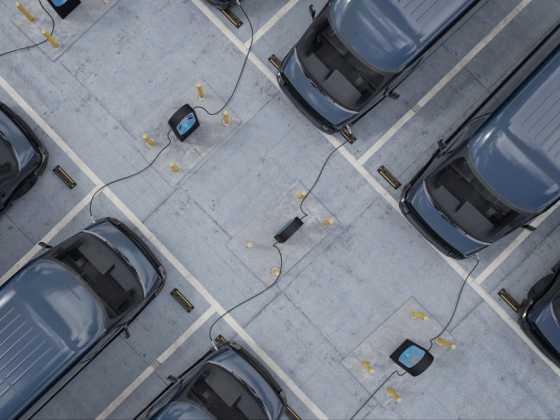Making use of the alternatives

While steps are taken for an electric future, alternative fuels should be adopted as an interim measure, a move which could see an estimated 1,250 lives saved a year. Michael Lunn from the Environmental Industries Commission (EIC) talks through the options of proven alternative fuels
No one is doubting that the long-term goal should be for all vehicles on our roads to be emission free. It is vital that we make this step to meet our Net Zero aspirations, but equally to solve the issue of poor air quality that has a devastating effect on people living in urban areas and cities.
Regular readers of this magazine will be all too aware of the devastating effects of poor air quality. The World Health Organisation estimates that it could be responsible for as many as 64,000 deaths a year in the UK. More than this, it is a cause of coronary heart disease, strokes, respiratory diseases, lung cancer, and can severely exacerbate asthma.
The Government has responded with a firm commitment to an all-electric future and a 2030 target for the end of the combustion engine on our roads. Many have applauded the foresight of this decision, but are we ignoring the reality that this deadline is a decade away? How many more lives will be lost to poor air pollution in the meantime? How many health conditions will be exacerbated by exhaust fumes over the next ten years?
At the Environmental Industries Commission (EIC) we represent the businesses that work in environmental technology. Our members are the pioneers who come up with practical and tangible solutions to some of our biggest environmental challenges. Their approach is methodical and steeped in common sense.
Looking at the issue of air quality they realised that the simple solution was to encourage the use of alternative fuels, as an interim measure, while we await an all-electric future. Our hugely conservative estimate is that more than 1,250 lives a year could be saved by encouraging people to switch. Surely this is worth the effort?
Alternative fuels are already here
Hydrotreated Vegetable Oil (HVO) is a cleaner burning diesel alternative fuel which can reduce exhaust gas emissions. It is a sustainable fuel, a fossil-free, low carbon drop-in diesel replacement made from 100% renewable waste, residues and vegetable oils which reduces greenhouse gas emissions by up to 90%, in addition to sizeable reductions in tailpipe emissions.
HVO is already widely used by many European heavy goods vehicle (HGV) manufacturers such as DAF, Scania, Volvo, MAN, Mercedes-Benz, Renault and Iveco. For passenger cars, companies like Mercedes, Citroen, Volvo, Renault, Peugeot and Nissan have developed an HVO offering.
Production is increasing across Europe and beyond as customers look to cleaner alternatives where an electric version is currently out of reach – either technologically or financially.
A hydrocarbon gas that exists in a liquefied form, Liquid Petroleum Gas (LPG) is a colourless, low carbon and highly efficient fuel. Supplied in two main forms, propane (C3H8) and butane (C4H10), LPG has a range of uses — from providing fuel for vehicles, leisure parks, crop-drying, BBQs and heating homes. There are many variations of LPG available, such as BioLPG.
Popular across Europe – in Italy around five per cent of cars and trucks run off LPG – and with European manufacturers such as Dacia who also provide factory-converted LPG vehicles for sale in the UK. Outside of Europe, Hong Kong has converted around 20,000 taxi fleet vehicles to run off LPG fuel.
We’re not talking about the theoretical here – these fuels are already widely available, manufacturers are already making vehicles, and there are numerous countries around the world that have successfully championed their use.
Grant schemes to encourage their use
Even here in the UK we already have great examples of encouraging the use of alternative fuels. For example, the GLA recognised that the move to an all-electric black cab fleet will take considerable resources and time, and for some drivers will be an unrealistic financial proposition in the short-term. Therefore, they expanded grant funding for LPG conversion in 2018.
Funded by the Mayor of London and Transport for London, the increase in the overall grant to £5 million provided a £5,000 grant to an additional 1,000 TX4 Euro 5 owners. LPG was recognised as an effective and low-cost way to reduce particulates emissions to a minimal level improving air quality from the black cab fleet while also reducing carbon compared to diesel.
Furthermore, the Mayor’s involvement in providing a ‘stepping-stone’ to alternative fuels through the use of grants demonstrates that practical measures that can be taken by government to reduce air pollution.
There is a model here which is proven to have worked just waiting to be extended to new sectors – public transport, refuse collection, construction machinery could be revolutionised with similar grants. Imagine the benefits and environmental impact of a similar scheme aimed at converting fleet owners across the UK to LPG or HVO? What about aiming at specific markets where viable electric alternatives are still a number of years away, like commercial HGVs?
Electric challenges for fleet owners
Readers of GreenFleet are likely to be aware of the challenges faced with a wholesale shift to electric. Cost, charging infrastructure, range, and availability of popular electric models, are often cited as barriers to entry for drivers. In addition, fleet owners will have specific needs and requirements that the ordinary driver may not have to deal with.
An interim move to alternative fuels could help deliver an immediate environmental impact on the road to an all electric destination. Where at the moment it might be difficult for fleet owners to justify the extra cost for electric vehicles, a financial incentive that encourages the use alternative fuels could encourage their use as an interim step.
In the lifespan of that vehicle, technology, production and design are likely to have caught up with the huge demand we’re already witnessing for electric vehicles, costs will reduce and charging infrastructure improve. As we get closer to the 2030 deadline, we will see more electric cars, vans and lorries come to market, giving fleet owners more affordable choices and options.
Changing post-COVID expectations
This year’s pandemic forced a ‘new normal’ on many. With most people staying at home during lockdown, traffic reduced drastically and air quality improved. Many individuals remarked on the purer air quality as cycling and walking increased.
Now that the country is on a long road to recovery, we should remember that thanks to alternative fuels such as LPG and HVO we have the technology to considerably improve air quality today and that their use will help us avoid a return to a pre-pandemic air pollution levels.
Thanks to alternative fuels, we have the solutions to improve air quality now, not just in a decade’s time.
Michael Lunn manages the Air Quality working group at the Environmental Industries Commission (EIC). Their latest research, Alternative Fuels Cutting Dangerous Air Pollution Faster, can be downloaded from their website: www.eic-uk.co.uk






